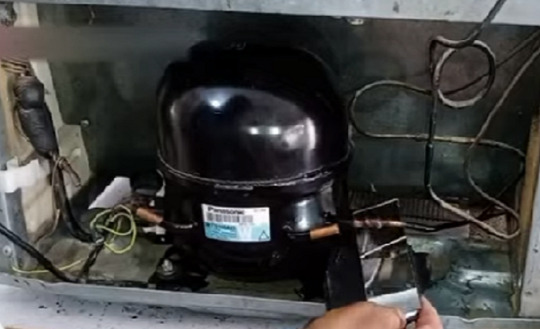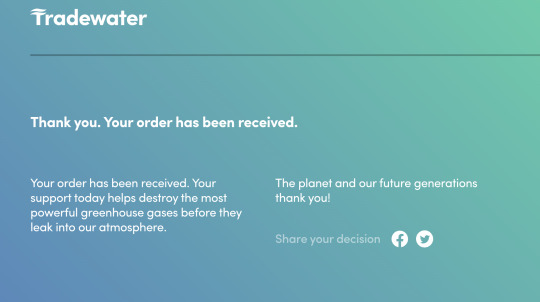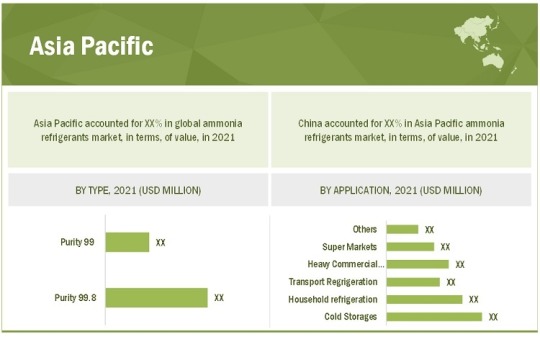#Refrigerants
Text
Charging Valve or Access Valve or pin Valve
Our Heavy Gauge Copper Pipe stands as a pinnacle of reliability and quality in refrigeration systems. Crafted with precision, it guarantees durability with its robust construction, ensuring optimal performance in diverse environments. Compatible with various refrigerants such as R-22 and R-134a, this copper pipe, sized at ¼ inch or 6.35 mm, seamlessly integrates into refrigeration systems, simplifying installation and replacement processes. The inclusion of long threads adds an extra layer of safety by significantly reducing the risk of refrigerant gas leakage. Undergoing stringent quality assurance checks, our copper pipe assures a consistent and dependable performance, making it the ideal choice for those seeking a durable, versatile, and trustworthy solution for their refrigeration needs.

#Refrigeration#CopperPipe#HeavyGauge#QualityAssurance#Durability#RobustConstruction#Versatile#Reliability#Performance#Installation#Replacement#Refrigerants#R22#R134a#Threaded#Safety#LeakagePrevention#PrecisionCrafted#ConsistentPerformance#TrustworthySolution#alramiz#are
2 notes
·
View notes
Text
At this year’s UN Cop28 climate summit the issue of air conditioning will be at the forefront of discussions as some of the world’s largest economies have signed up to the first ever global cooling pledge, led by the UN environment programme.
So far, more than 50 signatories have signed on to cut their cooling emissions by 68% by 2050.
India, however, is not expected to join. The country’s market for ACs is growing faster than almost anywhere else in the world. Higher incomes, rising temperatures in an already hot and humid climate and increasing affordability and access are driving more and more Indians towards buying or renting one as soon as they can afford it – and sometimes even when they cannot.
Between 8% and 10% of the country’s 300m households – home to 1.4 billion people – have an AC, but that number is expected to hit close to 50% by 2037, according to government projections. A report by the International Energy Agency (IEA) predicts that by 2050, India will have more than 1bn ACs in operation.
It could have significant implications for the global effort to keep temperature rises within 1.5C. Around the world, ACs are still largely inefficient and use a huge amount of electricity mostly generated by fossil fuels.
En masse, they can drive up outside temperatures as they pump out heat from indoors to outdoors. They contain chemical refrigerants which, if leaked, can be almost 1,500 times more environmentally destructive than CO2.
The vast amount of electricity that India’s growing number of ACs will require presents a significant challenge. Already during peak summertime hours, ACs have accounted for 40% to 60% of total power demand in the cities of Delhi and Mumbai.
According to the IEA, by 2050, the amount of power India consumes solely for air conditioning is expected to exceed the total power consumption of all of Africa.
Most of this electricity is produced by burning coal, and while India’s capacity from renewables such as solar power is expanding, it is happening nowhere near as fast as the growth of the AC market, which will soon outpace all other household appliances.
X
3 notes
·
View notes
Text
Alfa Romeo refrigerant capacity chart: R134a and R1234yf
1 note
·
View note
Text
The Vital Role and Hidden Perils of Refrigerants
Within the realm of household appliances, refrigerants serve a pivotal function in preserving the freshness of our food and maintaining a comfortable climate in our homes. Nonetheless, the inconspicuous dangers linked to these widely used substances harbor potential risks for both human well-being and the environment. Here, endeavors to uncover the latent hazards posed by refrigerants and offers crucial insights on ensuring safety amidst their usage.

Understanding the Unseen Threats:
Refrigerants are chemicals used in air conditioners, refrigerators, and other cooling appliances to transfer heat and maintain a desired temperature. While they contribute significantly to the comfort of our daily lives, some refrigerants can pose health risks and environmental hazards. The primary concerns include:
Ozone Depletion: Certain refrigerants, such as chlorofluorocarbons (CFCs) and hydrochlorofluorocarbons (HCFCs), contribute to ozone layer depletion. The ozone layer protects life on Earth by absorbing harmful ultraviolet (UV) radiation. Any damage to this protective layer can lead to increased UV radiation exposure, resulting in various health issues.
Global Warming Potential: Many modern refrigerants, particularly hydrofluorocarbons (HFCs), are potent greenhouse gases. HFCs can trap heat in the atmosphere, contributing to global warming and climate change. As concerns about the environment grow, understanding and mitigating these impacts become imperative.
How to Stay Safe:
Proper Ventilation: Ensure that areas with appliances using refrigerants are well-ventilated. Proper ventilation helps disperse any leaked refrigerants, reducing the risk of inhalation.
Regular Maintenance: Schedule regular maintenance for cooling appliances to identify and fix potential leaks promptly. Timely repairs can prevent the release of harmful refrigerants into the environment.
Environmentally Friendly Alternatives: Consider upgrading to appliances that use environmentally friendly refrigerants with lower global warming potential. Manufacturers are increasingly adopting greener alternatives to mitigate the environmental impact.
Professional Assistance: If you suspect a refrigerant leak or experience issues with your cooling appliances, seek professional assistance. Certified technicians can assess the situation and safely address any concerns.
FAQs:
Are all refrigerants harmful to the environment?
No, not all refrigerants are harmful. While some, like CFCs and HCFCs, contribute to ozone layer depletion, newer alternatives with lower global warming potential, such as hydrofluoroolefins (HFOs), are considered more environmentally friendly.
Can inhaling refrigerants pose health risks?
Yes, inhaling refrigerants can be harmful. Some refrigerants can cause respiratory issues, dizziness, and nausea. It's crucial to maintain proper ventilation and address any leaks promptly to minimize health risks. If exposure occurs, seek medical attention immediately.
By understanding the unseen threats associated with refrigerants and adopting safety measures, individuals can contribute to a safer environment and protect their well-being. Stay informed, prioritize regular maintenance, and choose appliances with eco-friendly refrigerants to create a healthier and more sustainable living space.
#Refrigerants#risk#safety#acrepair#hvac systems#home & lifestyle#ac installation#hvac contractor#hvac services#ac service#hvac
1 note
·
View note
Text
10% of all global electricity consumed is for cooling.
Benefits of cooling efficiency and the Kigali Amendment.

Action under the Kigali Amendment to the Montreal Protocol on Substances that Destroy the Ozone Layer (Montreal Protocol) will phase-down the production and use of hydrofluorocarbons (HFCs) and could avoid up to 0.4°C of global warming by 2100.
In a warming world, prosperity and civilization depend more on access to cooling.i The growing demand for cooling will contribute significantly to climate change. This is from both the emissions of HFCs and other refrigerants and CO2 and black carbon emissions from the mostly fossil fuel-based energy powering air conditioners and other cooling equipment.
These emissions are particularly dominant during periods of peak power demand, which are increasingly determined by demand for air conditioning. As the climate warms, the growing demand for cooling is creating more warming in a destructive feedback loop.
By combining energy efficiency improvements with the transition away from super-polluting refrigerants, the world could avoid cumulative greenhouse gas emissions of up to 210-460 gigatonnes of carbon dioxide equivalent (GtCO2e) over the next four decades, depending on future rates of decarbonisation. This is roughly equal to 4-8 years of total annual global greenhouse gas emissions, based on 2018 levels.
Cooling Emissions and Policy Synthesis Report.
WORLD OZONE DAY 2023 Theme: MONTREAL PROTOCOL: Fixing the ozone layer and reducing climate change.
#energy efficiency#ozoneaction#world ozone day#ozone depleting substances#refrigerants#greenhouse gas#carbon dioxide equivalent (GtCO2e)#decarbonisation.#Cooling emissions
0 notes
Photo

Day 3384 - Bought carbon offsets for our flights this weekend.
0 notes
Text
By popular demand (a reblog from @doodleswithangie) we present the ✨Concussion Cut✨ of Ben Schwartz's (@rejectedjokes) Renfield (@i-am-renfield) Answer Time interview with @overchers.

#renfield#renfieldat#ben schwartz#concussion cut#PSA please be careful of mirrors and glass walls#and brita filters#and refrigerators#they are everywhere#and they are dangerous
10K notes
·
View notes
Video
DIY refrigerant evaporator
The refrigerator freezer does not work. The refrigerator evaporator is broken. Let's diy a evaporator. All you need is prep, copper tubing, fridge filter, refrigerant gas and soldering strips.
0 notes
Text
"Governor Janet Mills announced that Maine has, two years ahead of time, surpassed its goal of installing 100,000 new heat pumps by 2025, a milestone that represents significant progress in reducing Maine’s reliance on heating oil, lowering heating costs, and curbing harmful carbon emissions.
To continue Maine’s momentum, Governor Mills also unveiled a new target: installing another 175,000 additional heat pumps in Maine by 2027, thereby bringing the number of heat pumps installed in Maine homes, businesses, and public buildings during her time in office to 275,000.
If this target is achieved, Maine would have more than 320,000 heat pumps in total installed across the state.
Heat pumps can be thought of as temperature recycling machines. They are filled with refrigerant fluid and contain a compressor, and they work by extracting excess heat and moving it around, either in or out of a house depending on whether it’s hot or cold.
It’s believed they work best in hot weather, but in February, Maine’s temperatures in some places plummeted during a cold snap to -60°F. Efficiency Maine, which aided in the state’s adoption of heat pumps by organizing rebates for customers under the provisions of the Inflation Reduction Act, did a survey of owners they had helped the previous year.
Many of [the heat pump owners] reported they were comfortable and warm, and offered to bring up the fact that by February they had already saved hundreds of dollars on home heating systems, over boilers, gas furnaces, and heating oil.
“We are setting an example for the nation,” said Mills at the announcement event. “Our transition to heat pumps is… curbing our reliance on fossil fuels, and cutting costs for Maine families, all while making them more comfortable in their homes—a hat trick for our state.”
The transition began in 2019 with bipartisan support of the Legislature, when Governor Mills enacted laws setting ambitious targets for transitioning to renewable energy and reducing greenhouse gas emissions."
-via Good News Network, July 31, 2023
#maine#united states#us politics#heat pump#fossil fuels#carbon emissions#climate crisis#refrigerant#heating and cooling#air conditioning#heater#cold snap#good news#hope#hope posting#janet mills
3K notes
·
View notes
Text
Ammonia Refrigerants Market Outlook, Trend, Growth and Share Estimation Analysis 2022 to 2030
Ammonia Refrigerants Market Outlook, Trend, Growth and Share Estimation Analysis 2022 to 2030
The ammonia refrigerants market is projected to reach USD 86.5 million by 2030, at a CAGR of 5.7% from USD 55.5 million in 2022. Ammonia is one of the most efficient refrigerants available and has a wide range of uses at different temperature and capacity. In addition to being natural the use of ammonia opens up the possibility of reduced energy consumption and secures long-term costs efficiency…

View On WordPress
#Ammonia#Ammonia Refrigerant#Ammonia Refrigerant Industry#Ammonia Refrigerants#Refrigerant#Refrigerants
0 notes
Text
the 1996 doctor who movie contains a perfect textbook example of fridging, wherein an established longtime character is killed off unceremoniously, with very little agency or time spent on their own perspective when they’re literally being killed, usually as a means to provide shock value, raise the stakes, or make the main character feel bad for thirty seconds before moving on
what sets it apart from every other loving wife and children in every superhero backstory ever, though, is that the person they fridged was THEIR OWN MAIN CHARACTER
#you can’t get this shit anywhere else#i love it and i hate it#doctor who#seventh doctor#eighth doctor#doctor who 1996#fridging#time lords in refrigerators#yeah okay it definitely wasn’t as bad as some other examples#but if you’ve seen that poll i’m running you can tell how it uh. it sure was something.
1K notes
·
View notes
Text










Liners
#acontextual house#house md#gregory house#james wilson#chris taub#robert chase#i cant explain how funny refrigerator line is to me#the outfit chase has on is a great representation of something cruel yet funny#serve king#that's an order#i have to get some sort of reward for putting penis and vagina in the same post... hope it's not a community label#longpost#long post#fuck me i cant decide which long_post tag to drop they're like brothers to me
2K notes
·
View notes
Text

Zero-energy Bio Refrigerator cools your food with future gel
979 notes
·
View notes
Text








sakura munching on food ❤️
418 notes
·
View notes
Text


YEAH POKÉMON WOOOOO,!
#skizzleman#impulsesv#imp and skizz#pokehermit au#pokemcyt#Skizz’s lucario is called Kevin bubbles malone refrigerator jimmy madeye Dugan. if any1 was wondering ^_^
1K notes
·
View notes
Text
How to Fix a Refrigerator That Won't Cool

If you don't know why your fridge is really not cool, you can use this step-by-step guide to figure out what's wrong and fix it yourself. The process is pretty easy, and you only need a few simple tools to do it.
Tools You Need
Ratchet/socket set
Write cutter/stripper
Things That are Needed
Condenser/Evaporator Fan
Problem:
There are many reasons why a fridge might not keep your ice cream frozen or your milk cold. Before you move on to more complicated methods, you should try a few easy fixes first.
• Check that the unit is plugged in and that the light comes on when the door is opened.
• Make sure the fridge's thermostat works by checking it.
• You shouldn't put frozen vegetables or ice cream boxes in the back vents.
• Use a vacuum to clean the coils, as dirty coils may be the problem.
• The fan on the condenser should be able to turn freely and not be stuck. You only need to unplug the appliance and pull out the condenser. Also, clean the fan blades and turn the fan by hand to see if it works. Put it back, turn on the refrigerator, and check to see if it works well.
How to Change the Fan in the Evaporator
Here are the steps to take:
Take off the lid
First, take off the cover so you can see the evaporator and get to the fan on the evaporator.
Take the fan's cover off.
If there's a cover on the fan, you can take the screws out to get to the fan.
Take out the Exhaust Fan
If you are sure that the fan doesn't turn or make noise, you should replace it. First, turn the power off and take out the screws.
Change the Fan
Replace the old fan with a new one. Use the bracket from the broken fan to mount the new one. Pull the wires out and connect them to the new fan. Last, put the cover back on.
Change the fan on the condenser.
Unplug the fridge and take off the back panel. Now you can get to the compressor fan and condenser. The next step is to turn on the refrigerator and wait a few seconds for the compressor to start up.
Also, make sure that the fan is working. Get a new fan if the compressor works but the fan doesn't. Now, if none of these things work and the compressor seems too hot, turn off the unit and point a pedestal fan at the compressor.
Now, let the compressor cool down for a few minutes and try again. If the fan doesn't work, you should get a new one. If neither the fan nor the compressor works, you need a new compressor relay. In this situation, you should talk to a technician.
When Should the Condenser Fan be Changed?
If it doesn't work or makes a lot of noise, you can get a new one. To take the fan off, you may need to take the bracket off.
Put in the brand-new fan.
You will see a few wires near the old fan. Cut them off and use good wire connectors to connect the new fan. Put the new fan in place and check it again.
So, if your fridge isn't cooling, you can try to fix it by following these steps.
Check out which sump pump you need for your property.
1 note
·
View note